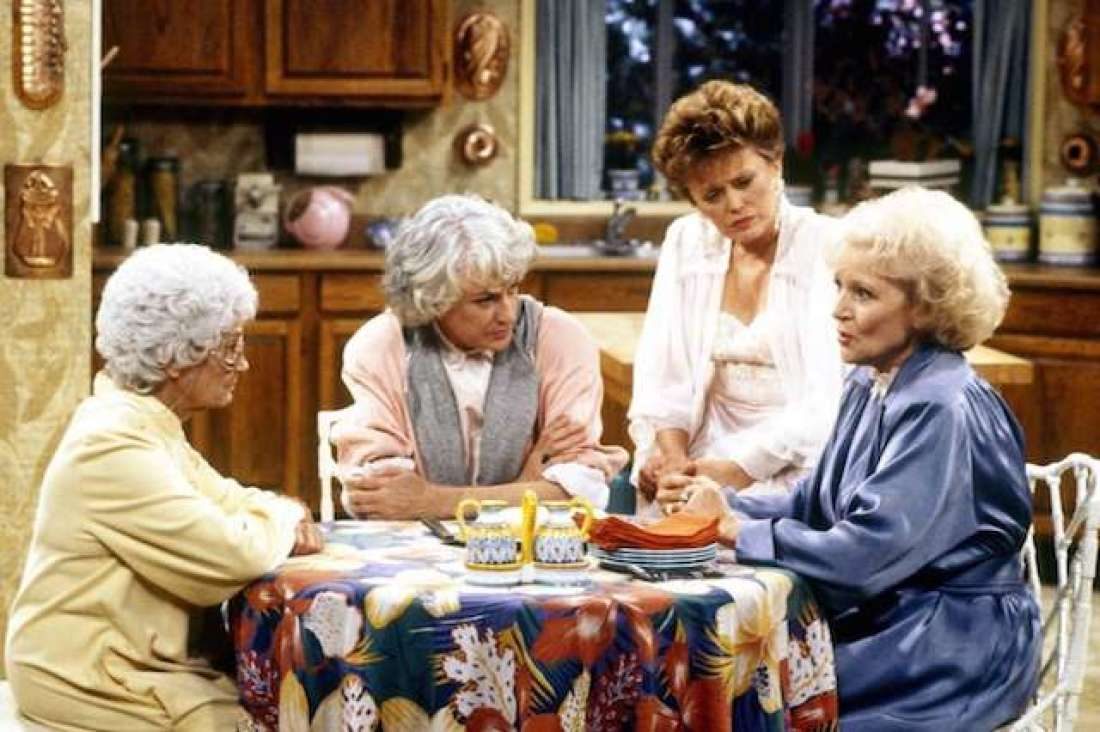Thank You For Being a Friend, Golden Girls, and for Making Me Excited About Getting Older

Picture it: Queens, New York, 1986. A seven-year-old, chubby Puerto Rican girl sat in front of her television mesmerized by the exploits of four “old ladies.” That little girl? Was me. That show? The Golden Girls.
The Golden Girls, which originally aired on NBC from 1985-1992 with 180 half-hour episodes over seven seasons, is having a bit of a resurgence. The entire show is available to watch on Hulu, and thanks to the blessings of each of the show’s four stars (Bea Arthur, Betty White, Rue McClanahan, and Estelle Getty), or their estates, permissions have finally been granted for licensing merchandise, which is why you see Golden Girls everything these days.
Exhibit A. My most recent purchase.
The question is: why do people still care so much? Why are people still so invested in a show from the 80s and early 90s about four women over the age of 50? Especially in a sexist and ageist society that places such a low value on femininity and such a high premium on youth?
First of all, the show holds up. Whereas other shows from the 1980s can feel dated, The Golden Girls‘ incisive humor still resonates today. And I’m not just talking about the sarcastic one-liners that are referred to as “savage:”
The Golden Girls used humor to explore issues and concerns that weren’t always handled well (if dealt with at all) on other shows from a feminine perspective. From homophobia, to racism, to ageism, Golden Girls tackled it with comedy, and through the lens of a female creator, writer/producer Susan Harris.
The show also touched on topics that we often don’t touch on even today. For example, in a 1989 episode called “Sick and Tired,” Dorothy is diagnosed with chronic fatigue syndrome. In real life, Harris had an adrenal issue that gave her similar symptoms to CFS, and so, according to an interview with Vulture, she inserted her struggles into Dorothy’s storyline as a “revenge script for all the people out there who had a disease like that” and weren’t believed by their doctors.
Harris’ husband and co-producer, Paul Junger Witt, believes the way they tackled these issues and topics is directly responsible for the current resurgence saying, “Having been able to make a comedy that was so real is what makes what’s going on with Golden Girls right now possible. It was never just about jokes. Those episodes meant the most to us because we tackled serious subjects that needed to be dealt with on a national level, and this was a safe way for people to see, hear, and absorb them.”
The fact that we still need a show like The Golden Girls, because too many other shows are still too afraid to tell certain stories is kinda sad. And yet, we’re lucky that, until more shows start getting braver, we will always have The Golden Girls to turn to for out-of-the-box storytelling in what might be, for some (especially if you didn’t grow up with the show), an unexpected place.
Exhibit B. My closest female friends and I call ourselves The Future Residents of Shady Pines and get together every year. Yes, there are shirts. Yes, we will have a house together in Miami someday.
For me, the show is still a revelation, because it’s largely responsible for my being able to walk toward getting older with confidence. To hell with Sex and the City (though I enjoyed that show, too), The Golden Girls had elementary school-age me excited about becoming an older woman.
In a world where girls and women are constantly taught that they’re only valuable insofar as they’re fuckable, and that they’re only fuckable as long as they preserve their youth, The Golden Girls gives us an alternative, subversive, and feminist message: there is more to a woman’s life than her relationship to men (though, by the way, women over a certain age can still have plenty of sex, thankyouverymuch).
The Golden Girls takes place at a time when all the main characters have, either through widowhood or divorce, moved past their significant attachments to men. The show’s focus is on them and their friendship, and while it does often address their dating and sexual lives, those things are only a part of the whole, not the entire focus.
We watch as they navigate their work lives and their ambitions, their relationships with each other and their families, their engagement with the wider world. Dorothy, Blanche, Rose, and Sophia are people, each with their own distinct inner lives that may or may not have anything to do with a romantic partner.
And as a little girl watching the show, I learned that there is no expiration date on new adventures and changing your life. That no matter what decisions I’d make, or who I’d marry, or whether or not I have kids, or how attractive the world thinks I am (or not), that life need never get stale. Even for a woman of a certain age.
Thank you for being a friend, Golden Girls, and for always reminding me of the possibilities.
(image: Disney/ABC)
Want more stories like this? Become a subscriber and support the site!
—The Mary Sue has a strict comment policy that forbids, but is not limited to, personal insults toward anyone, hate speech, and trolling.—
Have a tip we should know? tips@themarysue.com